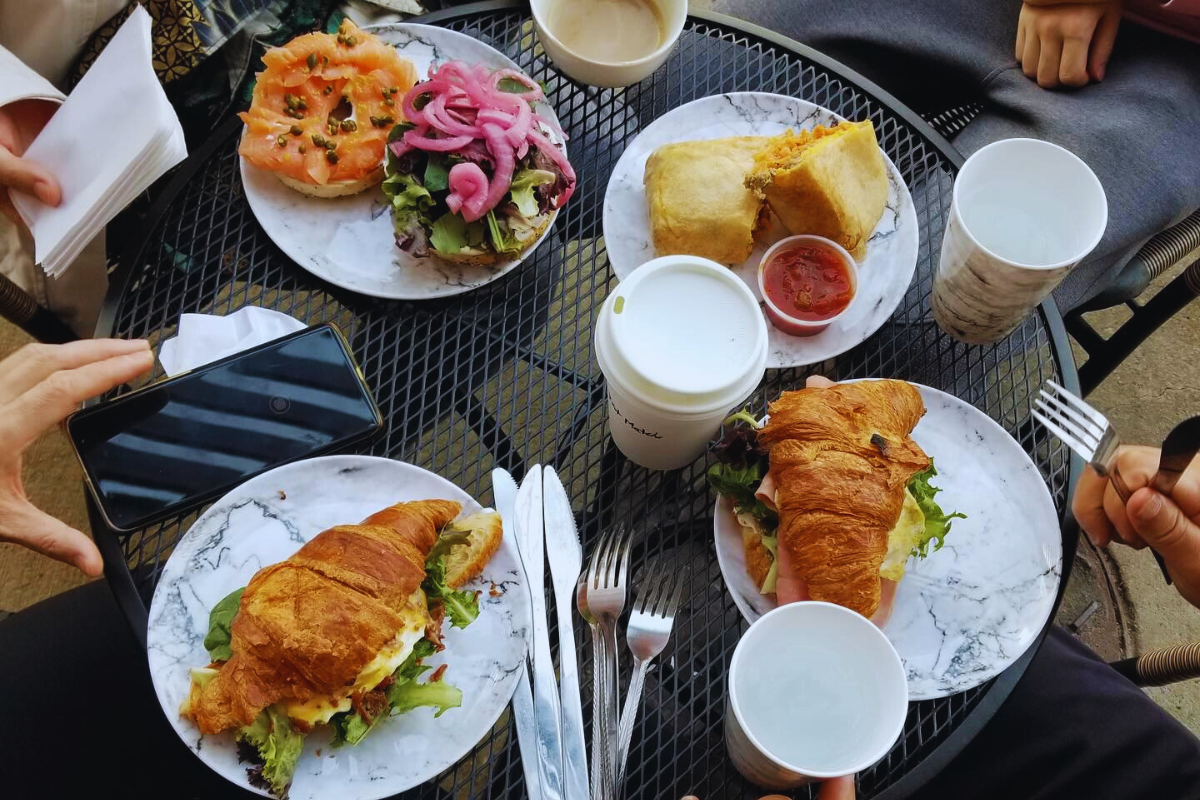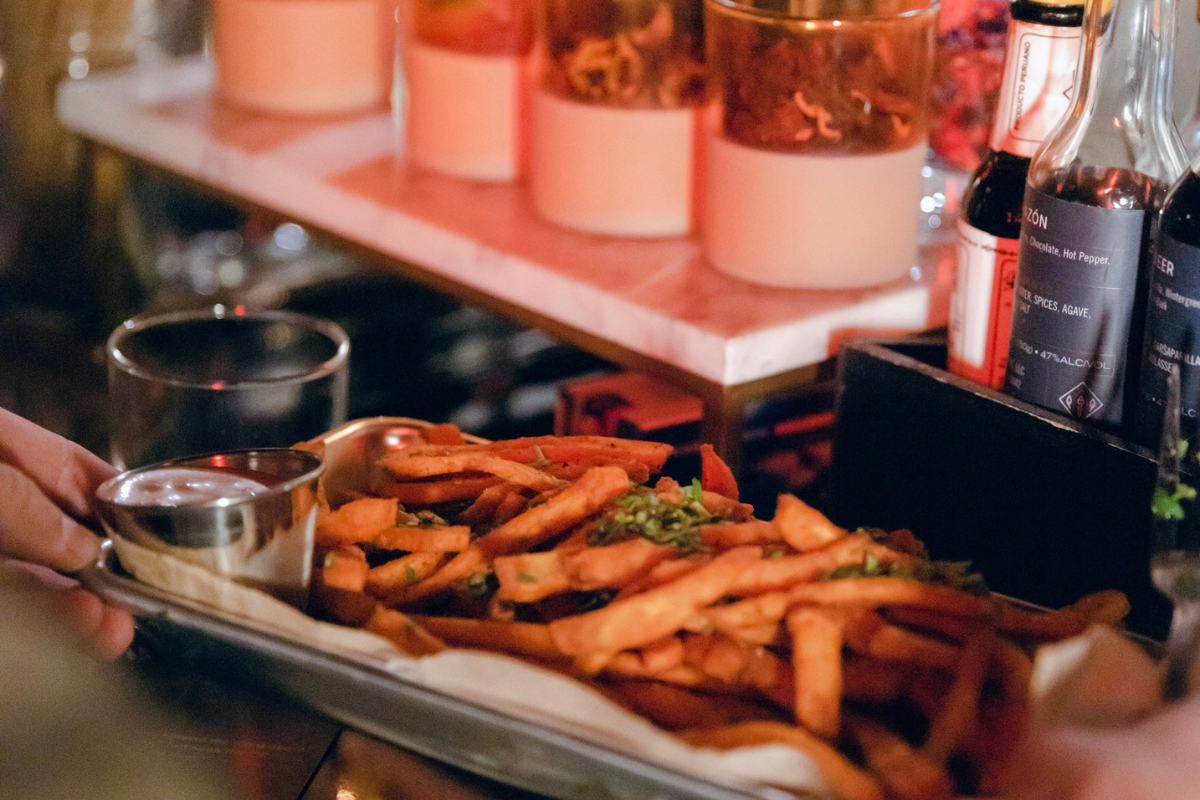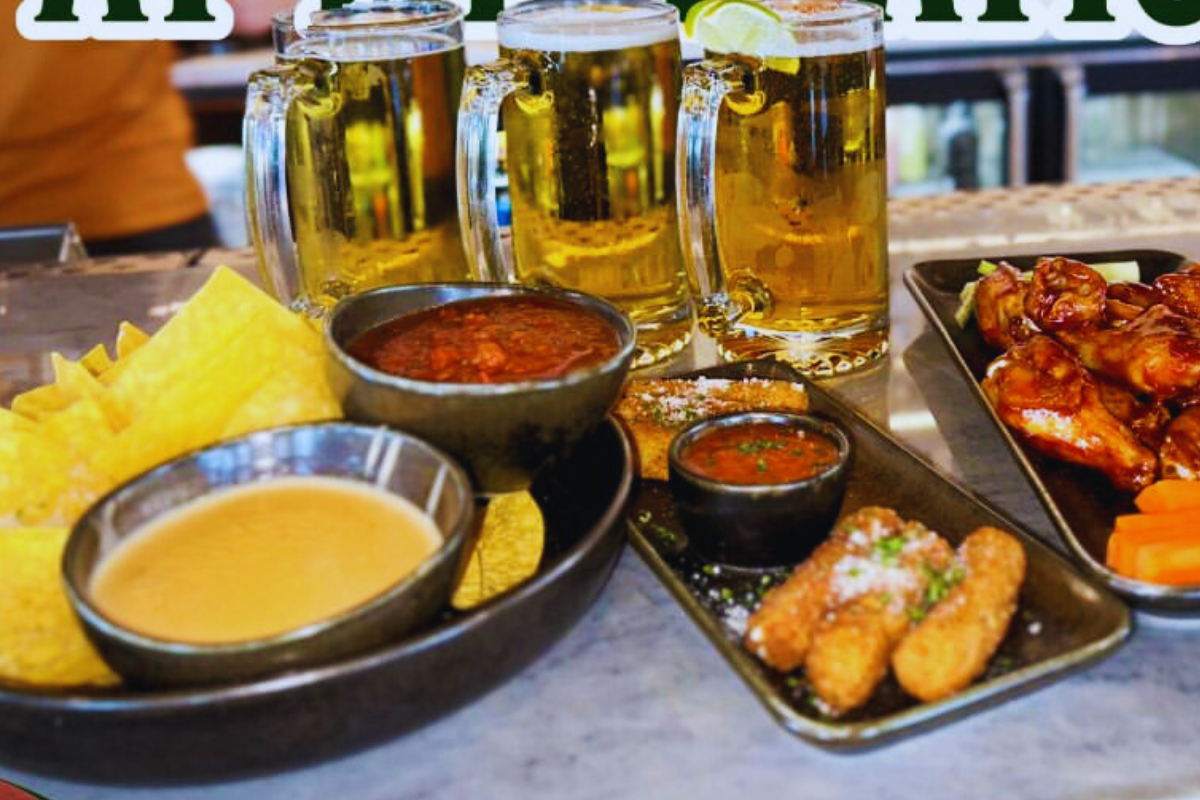Home
Restaurants
The Best Indian Food in Salt Lake City: How Lavanya Mahate Built a Five-Restaurant Empire from a Farmer's Market Spice Stand
The Best Indian Food in Salt Lake City: How Lavanya Mahate Built a Five-Restaurant Empire from a Farmer's Market Spice Stand
There's this moment that happens at the downtown Saffron Valley location on a Tuesday afternoon when the lunch buffet is in full swing. Steam rises from copper chafing dishes holding butter chicken that's been slow-cooked with fenugreek, and somewhere in the back kitchen, a five-foot-wide dosa is coming off the griddle. The air smells like cumin seeds hitting hot ghee and fresh naan emerging from the tandoor oven. One regular customer who's been eating here for seven years says the food reminds them of dishes they enjoyed in India back in 2016—which, if you know anything about immigrant restaurant owners and their ability to recreate home flavors thousands of miles away, is about the highest compliment you can give.
But what makes Saffron Valley different from every other Indian restaurant in Salt Lake City isn't just the food—though we'll get to that butter chicken in a minute. It's the fact that this whole thing started with a woman who quit her job at the Salt Lake Chamber to sell spice blends at a farmer's market. And now, 14 years later, Lavanya Mahate runs five locations across the valley, a nonprofit culinary institute training refugee women, and most recently, a train-themed fine dining concept that's changing what people think Indian food can be in Utah.

From Andhra Pradesh to the Avenues: One Woman's Journey Through India's Regional Cuisines
Lavanya Mahate didn't come to Utah planning to open restaurants. When she arrived in 2001 after completing a master's degree in mass communication in India, she was on a dependent visa and couldn't legally work. So she did what a lot of immigrants do—she went back to school, this time at the University of Utah for another master's in integrated marketing communications.
The food part? That was always there, simmering in the background of her life. She spent much of her childhood in the Southern state of Andhra Pradesh and moved to Tamil Nadu during her teenage years, which meant her cooking style was rooted in Southern Indian traditions. Then college in Pune, where she fell hard for street food. Travel through Delhi taught her North Indian cooking. By the time she landed in Salt Lake City, she carried the flavors of four distinct regions with her—North, South, East, and West India. And if you know anything about Indian food, you know those regional differences aren't subtle. They're the difference between a Kerala fish curry made with coconut milk and a Punjabi butter chicken finished with cream and fenugreek.
After graduation, Mahate worked for two years as an unpaid intern for the Women's Business Center of Utah, then became its director. She was helping other people start businesses, guiding them through business plans and financing. Good work. Important work. The kind of job that looks perfect on paper. But something kept whispering at her.
In 2010, she made the leap. Started a line of spice blends at the Downtown Farmer's Market. The blends sold well enough that in 2011, she opened her first restaurant in South Jordan. It was the first restaurant in the Salt Lake Valley to bring Indian street food and South Indian specialties. Not just another curry house doing the greatest hits of North Indian cooking—she was bringing samosa chaat, pani puri, and massive rice-and-lentil dosas to a place where most people thought Indian food meant chicken tikka masala and garlic naan.
What You're Actually Getting When You Walk Into Saffron Valley
Here's the thing about Saffron Valley that catches people off guard: each location is genuinely different. The downtown spot on E Street has this British Colonial vibe with its architecture and decor. Sugar House is part restaurant, part spice market, part chai house with communal tables and brass and copper decor everywhere. South Jordan started as the original street food cafe in an unassuming strip mall. And the newest addition, Central by Saffron Valley, is an elevated fine-dining experience in a train-themed space where some dishes arrive via robot.
But start with the downtown location if you want to understand what Mahate built. The lunch buffet runs Tuesday through Sunday and includes both naan and dosas—which is rare for Indian buffets. It's the largest Indian buffet in Salt Lake City, and unlike a lot of buffets where food sits getting sad under heat lamps, this one moves. Fresh dosas coming out constantly. Naan still warm from the tandoor. Multiple curries representing different regions of India.
The butter chicken here isn't playing around. One food critic described the Old Delhi Butter Chicken as taking the foundational flavors that make butter chicken so delightful and elevating them to gorgeous new heights. The pulled chicken gets charred in the tandoor before finishing in that creamy tomato curry flavored with fenugreek. Multiple customers call it their go-to, especially perfect when you're not feeling great after a long weekend and need comfort food that actually comforts. One regular says "BUTTER CHICKEN always so good" and orders it constantly.
Then there are the dosas. If you haven't had a dosa before, imagine a massive rice-and-lentil crepe that's been cooked until it's crispy on the outside and soft inside, served with coconut chutney, tomato chutney, and sambar—a lentil soup that's tangy and warming at the same time. Customers rave about them, saying they can't get enough, especially with the coconut and tomato chutney and sambar. One diner described the masala dosa as a giant crepe filled with seasoned potatoes—about five inches greater in diameter than a dinner plate. The Tuesday night buffet features all-you-can-eat dosas, which means you can work your way through different fillings: the traditional masala version with spiced mashed potatoes, the chicken tikka dosa with pulled chicken in tikka sauce, or the paneer spring dosa stuffed with cottage cheese and vegetables.
The chicken biryani has developed a serious cult following. Customers who like it spicy order it at fire level and call it one of the best chicken biryanis they've ever had, with plenty of chicken throughout the rice. Another customer exclaimed "Who made this batch? The spice and the blend was just phenomenal!!!!!" after their Friday evening order. Biryani is one of those dishes that reveals a kitchen's skill—it's slow-cooked rice layered with meat and aromatics, taking hours to make properly. When it's done right, every grain of basmati carries flavor.
For appetizers, the Chicken 65 consistently gets called out. One customer who'd tried almost every Indian restaurant in the valley said Saffron Valley's Chicken 65 was "SO good," along with the channa masala and coconut korma. Chicken 65 is a South Indian specialty—crispy fried chicken morsels garnished with fresh curry leaves and dried chilies. The samosa chaat is essentially a deconstructed samosa layered with sweet yogurt, aromatic spices, and tangy sauces. One diner described it as "like a deconstructed samosa loaded with sauces, herbs, and spices—what an interesting dish!"
The coconut korma draws fans for its rich, creamy curry made with coconut milk and aromatic spices. People order the lamb version, the chicken version, even the vegetarian paneer version. The lamb tikka masala is another favorite, with tender lamb in that classic tomato-cream sauce. And if you're looking for something with a kick, the vindaloo delivers—though be warned, Saffron Valley doesn't play when it comes to spice levels.

Cooking Methods That Matter: The Tandoor Oven and Slow-Layered Flavors
Walk past the open kitchen at any Saffron Valley location and you'll see the tandoor—a traditional clay oven that gets hot enough to char meat and blister naan in minutes. The butter chicken starts with chicken that's been charred in the tandoor, then finished in that creamy tomato curry. The naan comes out with those characteristic bubbles and char marks that you can't get from a regular oven. The garlic cheese naan is particularly popular, coming out fresh and soft with enough garlic to make your eyes water in the best way.
But the real technique here is about patience. Mahate describes her cooking philosophy as layering flavors—starting with sautéing the onions, ginger and garlic, then layering in spices, vegetables, and finishing ingredients. You develop flavor through slow cooking. It's why the biryani takes hours. Why the curries taste deeper than what you get at places rushing food out. She mentions biryani specifically—that mixed rice dish slow-cooked with Indian spices and served with meat or vegetables depending on the version. When you eat it, you're tasting those hours of careful layering.
The Indo-Chinese dishes on the menu represent another aspect of Indian street food culture. The Cauliflower Manchurian swaps fried chicken for fried cauliflower tossed in a spicy garlic-chili sauce. One vegetarian customer said it was the closest they'd ever had to a vegetarian version of sweet and sour chicken, and it was amazing. These fusion dishes reflect the Chinese influence on Indian street food, particularly in cities like Kolkata.
More Than Restaurants: Building Community Through Food in Salt Lake City
Here's where the Saffron Valley story becomes something bigger than just good Indian food in downtown Salt Lake City. Two years ago, Mahate founded RISE Culinary Institute, a nonprofit organization that provides free culinary training to refugee and immigrant women. Multiple women have found successful careers in Utah's culinary scene through the program, landing jobs at places like Flower Child and the Grand America hotel. Mahate talks about loving to connect with these women and hear their stories and reasons—they're so resilient, she says.
The Sugar House location doubles as a spice market where you can buy the same spice blends Mahate started selling at the farmer's market, plus chutneys, preserves, and ingredients for cooking Indian food at home. There are communal tables for private events. The whole space is designed to be more than just a place you eat—it's a place you learn about Indian food, about spices, about the regions those flavors come from.
And then there's Central by Saffron Valley, which opened in September 2025 in the building that used to house Stanza. The train theme comes from Mahate's childhood memories of regularly taking trains to visit cousins who lived more than 400 miles away in another state in India. She says every Indian has a beloved story or two about their train experience growing up. Some dishes come served in tiffin carriers—those stacked metal containers that evoke the dabbawalas, Mumbai's famous lunch delivery system. There's a robot that delivers food. The saffron fruit and nut biryani is a star dish that customers describe as a must-try, along with the gulab jamun cheesecake that puts an unexpected twist on traditional Indian dessert.
The whole experience at Central is designed as a culinary journey through India via railway. Early reviews say SLC has been needing an upscale Indian place and this does a great job at it. The dahi puri and paneer kebabs are getting particular praise.
What This Means for Utah's Food Scene
Salt Lake City has never really been a place where you'd find authentic regional Indian cooking outside of someone's home kitchen. Most Indian restaurants here do the same menu of North Indian standards because that's what people know, what they order, what feels safe. But Saffron Valley was the first of its kind in the Salt Lake Valley, offering a unique menu that brought street food and South Indian specialties to a market that didn't know it wanted them.
A vegetarian Indian family from Houston visiting Utah came in with mid-expectations because, well, Utah. But they left saying the food was some of the best, flavorful Indian food they've ever had. That kind of endorsement from people who grew up eating this food? That's the real measure. Another customer from out of state wrote that they were looking for Indian food comparable to California and "this is soooo good."
The fact that Mahate now runs five locations—downtown/Avenues, Sugar House, South Jordan, Riverton, and Central—means she's proven there's an appetite for regional Indian cooking in Utah. She's also proven you can run a successful restaurant business while giving back through culinary training programs and maintaining hands-on involvement. Mahate, along with her husband and children, are very much involved in the day-to-day running of the business. You can see the pride the owners take in every location—one customer mentioned even the bathroom was immaculate at the South Jordan spot.

Planning Your Visit to Saffron Valley
Downtown/Avenues Location: 26 E Street, Salt Lake City, UT 84103. This is your spot for the legendary lunch buffet (Tuesday-Sunday, 11am-2:30pm) and dinner service. The buffet is the largest in Salt Lake City and includes dosas and naan. Closed Mondays. Tuesday nights feature the all-you-can-eat dosa buffet. Park on the street or in nearby lots—there's generally good availability. Dinner service runs Tuesday-Thursday and Sunday 5pm-10pm, Friday-Saturday 5pm-10pm.
Sugar House Location: 479 E 2100 S, Salt Lake City, UT 84115 in the Liberty Wells neighborhood. Part restaurant, part market, part chai house. Come here if you want to buy spice blends and ingredients to take home, or if you prefer communal table seating with that eclectic brass and copper decor. Same hours as downtown location.
South Jordan Location: The original street food cafe in the strip mall at 1098 S Jordan Parkway. This is where it all started back in 2011. Great for lunch buffet or casual dining with that unassuming, approachable vibe.
Central by Saffron Valley: 454 E 300 South near downtown Salt Lake City. The upscale, train-themed location for special occasions and elevated Indian dining. Check their website for current hours and reservations.
What to Order: Start with the butter chicken if you want to understand why this place has a following—get it with garlic cheese naan. Try at least one dosa, preferably the masala dosa or chicken tikka dosa. If you're doing the buffet, load up on fresh dosas and whatever curry looks most vibrant. The biryani (chicken or lamb) is worth ordering as a main dish. For appetizers, the Chicken 65 or samosa chaat represent that street food approach Mahate brought from India. The coconut korma works whether you order it with chicken, lamb, or paneer. If you want heat, go for the vindaloo or chettinad. The lamb tikka masala hits that classic Indian restaurant comfort zone but done really well.
Best Times: Tuesday night dosa buffet at the downtown location if you want to focus on South Indian specialties. Weekend lunch buffets get busy but move quickly. Weeknight dinners offer a more relaxed atmosphere. Groups of 12 or more can book private dining spaces.
Spice Levels: Don't be shy about ordering mild if you're sensitive to heat—the kitchen knows how to dial it back without losing flavor. But if you love spice, order one level above what you normally get because reviews suggest the spice levels run a bit conservative for Utah palates.
Follow @saffronvalley on Instagram for menu updates and seasonal specials.
Why Saffron Valley Matters
In a state where the food scene has traditionally skewed conservative, where "exotic" often means anything with more spice than a sandwich, Lavanya Mahate took a real risk opening an Indian restaurant focused on street food and regional specialties most Utahns had never heard of. She could have played it safe with chicken tikka masala and garlic naan and called it a day. Made it mild, made it familiar, made it comfortable.
Instead, she brought dosas and pani puri and samosa chaat. She opened a spice market. She started training refugee women in culinary skills. She created different atmospheres at each location so you could experience Indian food in multiple contexts—fast-casual in South Jordan, market-meets-restaurant in Sugar House, elevated fine dining at Central with its train-themed decor and robot servers.
The result is that Salt Lake City now has access to some of the best Indian food you'll find anywhere in the Mountain West, run by someone who actually grew up eating these flavors across multiple regions of India. Someone who understands that butter chicken tastes better when you char the chicken in a tandoor first. That biryani requires patience and layering. That a proper dosa is crispy, massive, and served with three different accompaniments—coconut chutney, tomato chutney, and sambar.
Mahate has been building this culinary route across the Wasatch Front for 14 years now. What started as spice blends at a farmer's market became a restaurant empire that's introduced Utah to the breadth of Indian regional cooking. And judging by the customers who've been coming back for seven years, who order the butter chicken every time, who get excited about Tuesday night dosa buffets, who travel from Houston and California and say this is some of the best Indian food they've had—she's doing something right.
As one customer put it after trying almost every Indian restaurant in the valley: "WOW. Saffron Valley blew me away!" That pretty much sums it up.
Share













